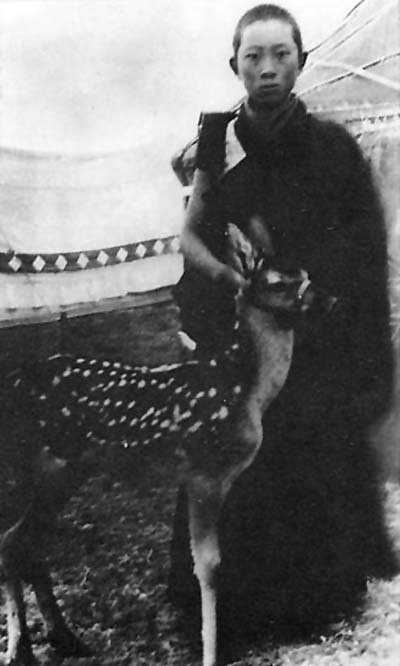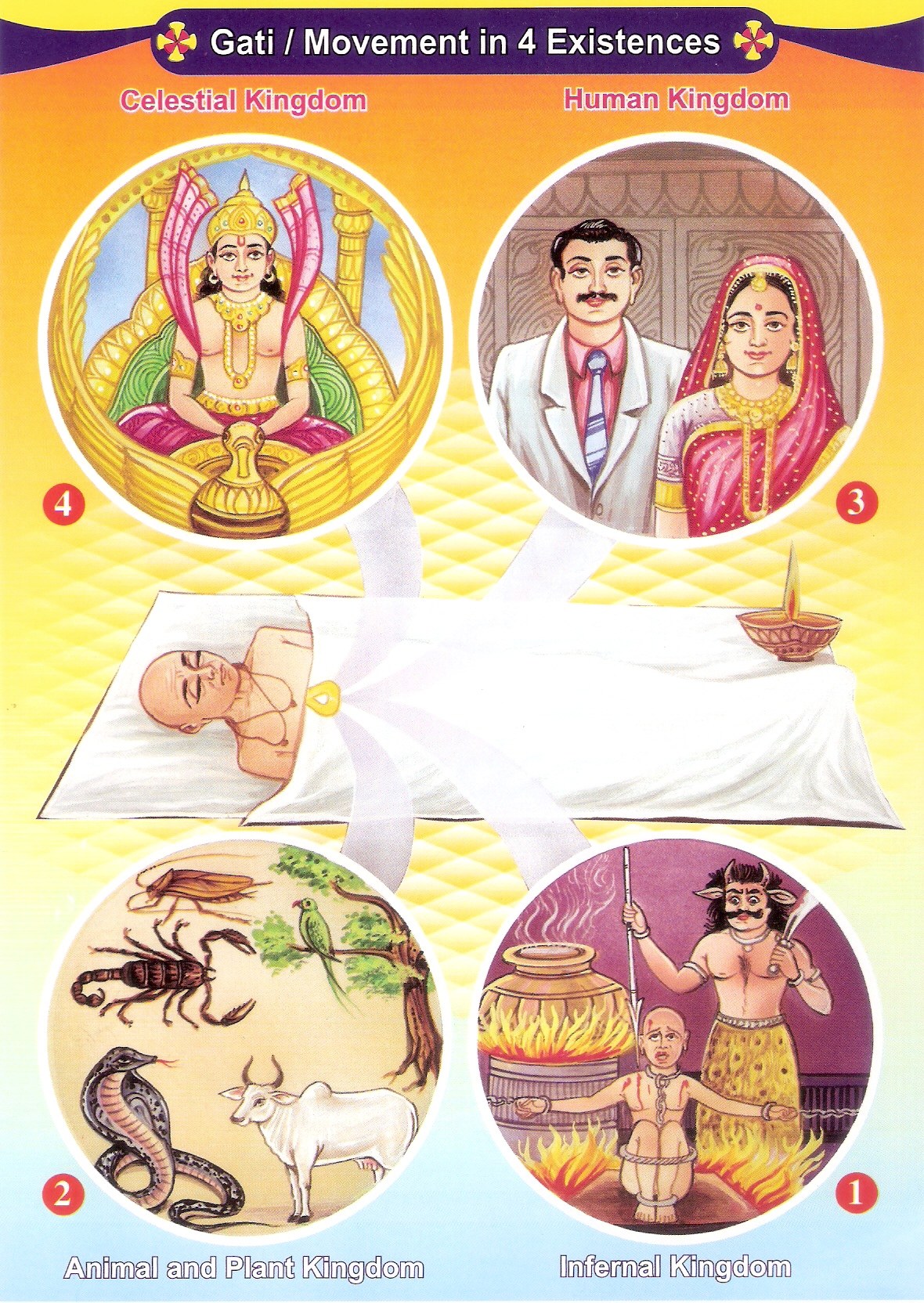|
Choekyi Gyaltsen, 10th Panchen Lama
Lobsang Trinley Lhündrub Chökyi Gyaltsen (born Gönbo Cêdän; 19 February 1938 – 28 January 1989) was the tenth Panchen Lama, officially the 10th Panchen Erdeni (), of the Gelug school of Tibetan Buddhism. According to Tibetan Buddhism, Panchen Lamas are living emanations of the buddha Amitabha. He was often referred to simply as Choekyi Gyaltsen. Recognition The Paṇchen Lama incarnation line began in the seventeenth century after the 5th Dalai Lama gave Chokyi Gyeltsen the title, and declared him to be an emanation of Buddha Amitaba. Officially, he became the first Panchen Lama in the lineage, while he had also been the sixteenth abbot of Tashilhunpo Monastery. The 10th Panchen Lama was born as Gonpo Tseten on 19 February 1938, in Bido, today's Xunhua Salar Autonomous County of Qinghai, known as Amdo. His father was also called Gonpo Tseten and his mother was Sonam Drolma. After the Ninth Panchen Lama died in 1937, two simultaneous searches for the tenth Panche ... [...More Info...] [...Related Items...] OR: [Wikipedia] [Google] [Baidu] |
Shigatse
Shigatse, officially known as Xigazê () or Rikaze ( zh, s=日喀则, p=Rìkāzé), is a prefecture-level city of the Tibet Autonomous Region of the People's Republic of China. Its area of jurisdiction, with an area of , corresponds to the historical Ü-Tsang region of Tibet. Overview The administrative center of the prefecture-level city is the Samzhubzê District. It is roughly equivalent to the historical Shigatse urban center, the second-largest city in Tibet, located about southwest of Lhasa and home to the Tashilhunpo Monastery, traditionally the seat of the Panchen Lama. Some of the towns in the prefecture are: Gyantse (Gyantse County), Tingri (town), Tingri (Tingri County), and Nyalam Town, Nyalam (Nyalam County). On 11 July 2014 Shigatse Prefecture was upgraded into a prefecture-level city (the same status as Lhasa). History In the eighth century, the Tibetan Empire of Chisong Dezan, Tibetan King Chisong Dezan invited Indian monk Padmasambhava into Tibet to build ... [...More Info...] [...Related Items...] OR: [Wikipedia] [Google] [Baidu] |
5th Dalai Lama
The 5th Dalai Lama, Ngawang Lobsang Gyatso (; ; 1617–1682) was recognized as the 5th Dalai Lama, and he became the first Dalai Lama to hold both Tibet's political and spiritual leadership roles. He is often referred to simply as the Great Fifth, being the key religious and temporal leader of Tibetan Buddhism and Tibet. He is credited with unifying all of Tibet under the Ganden Phodrang, after Gushri Khan's successful military interventions. As an independent head of state, he established priest and patron relations with both Mongolia and the Qing dynasty simultaneously, and had positive relations with other neighboring countries. He began the custom of meeting early European explorers. The 5th Dalai Lama built the Potala Palace, and also wrote 24 volumes' worth of scholarly and religious works on a wide range of subjects. Early life To understand the context within which the Dalai Lama institution came to hold temporal power in Tibet during the lifetime of the 5th, ... [...More Info...] [...Related Items...] OR: [Wikipedia] [Google] [Baidu] |
Gelug
file:DalaiLama0054 tiny.jpg, 240px, 14th Dalai Lama, The 14th Dalai Lama (center), the most influential figure of the contemporary Gelug tradition, at the 2003 Kalachakra ceremony, Bodh Gaya, Bodhgaya (India) The Gelug (, also Geluk; 'virtuous')Kay, David N. (2007). ''Tibetan and Zen Buddhism in Britain: Transplantation, Development and Adaptation,'' p. 39. Routledge. is the newest of the four major schools of Tibetan Buddhism. It was founded by Je Tsongkhapa (1357–1419), a Tibetan people, Tibetan philosopher, Vajrayana, tantric yogi and lama and further expanded and developed by his disciples (such as Khedrup Gelek Pelzang, 1st Panchen Lama, Khedrup Je, Gyaltsab Je, Gyaltsap Je, Dulzin Drakpa Gyaltsen, and 1st Dalai Lama, Gendün Drubpa). The Gelug school is alternatively known as Kadam (''bKa’-gdams gsar-pa''), since it sees itself as a continuation of the Kadam (Tibetan Buddhism), Kadam tradition of Atiśa, Atisha (c. 11th century). The school of New Kadam, or New Kadampa ... [...More Info...] [...Related Items...] OR: [Wikipedia] [Google] [Baidu] |
Dharma Name
A Dharma name is a new name acquired during both lay and monastic Buddhist initiation rituals in Mahayana Buddhism and Pabbajjā, monastic ordination in Theravada Buddhism (where it is more proper to call it Dhamma or Sangha name). The name is traditionally given by a Buddhist monasticism, Buddhist monastic, and is given to newly ordained Bhikkhu, monks, Bhikkhunī, nuns and laity. Dharma names are considered aspirational, not descriptive. Most of the well-known Buddhist teachers are known to have had many different Dharma names in the course of their careers, and often each name represents a stage of their career. For example, Prince Shotoku was also known as Prince Umayado and Prince Kamitsumiya. Shinran's original name was Matsuwakamaru; he was also known as Hanen, Shakku, Zenshin, Gutoku Shinran and Kenshin Daeshi. Nichiren's original name was Zennichi and his Dharma names were Zenshobo Rencho and Rissho Daishi. Similarly, the tradition of various Dharma names was also used ... [...More Info...] [...Related Items...] OR: [Wikipedia] [Google] [Baidu] |
Mongolian Language
Mongolian is the Prestige (sociolinguistics), principal language of the Mongolic languages, Mongolic language family that originated in the Mongolian Plateau. It is spoken by ethnic Mongols and other closely related Mongolic peoples who are native to modern Mongolia and surrounding parts of East Asia, East, Central Asia, Central and North Asia. Mongolian is the official language of Mongolia and Inner Mongolia and a recognized language of Xinjiang and Qinghai. The number of speakers across all its dialects may be 5–6 million, including the vast majority of the residents of Mongolia and many of the Mongols in China, ethnic Mongol residents of the Inner Mongolia of China. In Mongolia, Khalkha Mongolian is predominant, and is currently written in both Cyrillic script, Cyrillic and the traditional Mongolian script. In Inner Mongolia, it is dialectally more diverse and written in the traditional Mongolian script. However, Mongols in both countries often use the Latin script for conve ... [...More Info...] [...Related Items...] OR: [Wikipedia] [Google] [Baidu] |
Loanword
A loanword (also a loan word, loan-word) is a word at least partly assimilated from one language (the donor language) into another language (the recipient or target language), through the process of borrowing. Borrowing is a metaphorical term that is well established in the linguistic field despite its acknowledged descriptive flaws: nothing is taken away from the donor language and there is no expectation of returning anything (i.e., the loanword). Loanwords may be contrasted with calques, in which a word is borrowed into the recipient language by being directly translated from the donor language rather than being adopted in (an approximation of) its original form. They must also be distinguished from cognates, which are words in two or more related languages that are similar because they share an etymological origin in the ancestral language, rather than because one borrowed the word from the other. Examples and related terms A loanword is distinguished from a calque (or ... [...More Info...] [...Related Items...] OR: [Wikipedia] [Google] [Baidu] |
Manchu Language
Manchu ( ) is a critically endangered language, endangered Tungusic language native to the historical region of Manchuria in Northeast China. As the traditional native language of the Manchu people, Manchus, it was one of the official languages of the Qing dynasty (1644–1912) of China, although today the vast majority of Manchus speak only Mandarin Chinese. Several thousand can speak Manchu as a second language through governmental primary education or free classes for adults in classrooms or online. The Manchu language has high historical value for historians of China, especially for the Qing dynasty. Manchu-language texts supply information that is unavailable in Chinese, and when both Manchu and Chinese versions of a given text exist, they provide controls for understanding the Chinese. Like most Siberian languages, Manchu is an agglutinative language that demonstrates limited vowel harmony. It has been demonstrated that it is derived mainly from the Jurchen language thou ... [...More Info...] [...Related Items...] OR: [Wikipedia] [Google] [Baidu] |
Sanskrit
Sanskrit (; stem form ; nominal singular , ,) is a classical language belonging to the Indo-Aryan languages, Indo-Aryan branch of the Indo-European languages. It arose in northwest South Asia after its predecessor languages had Trans-cultural diffusion, diffused there from the northwest in the late Bronze Age#South Asia, Bronze Age. Sanskrit is the sacred language of Hinduism, the language of classical Hindu philosophy, and of historical texts of Buddhism and Jainism. It was a lingua franca, link language in ancient and medieval South Asia, and upon transmission of Hindu and Buddhist culture to Southeast Asia, East Asia and Central Asia in the early medieval era, it became a language of religion and high culture, and of the political elites in some of these regions. As a result, Sanskrit had a lasting effect on the languages of South Asia, Southeast Asia and East Asia, especially in their formal and learned vocabularies. Sanskrit generally connotes several Indo-Aryan languages# ... [...More Info...] [...Related Items...] OR: [Wikipedia] [Google] [Baidu] |
Pandita (Buddhism)
In Buddhism, ''paṇḍita'' (Pali, Sanskrit; Tibetan: ''khepa''; Wylie transliteration, Wyl:'' mkhas pa'') is a term meaning "a wise, learned, or astute person". This term has been used by Buddhists in several Polysemy, distinct but related ways, all referring to people who have an understanding of the Buddhist teachings. Theravada Buddhism In Theravada Buddhism, as it is used in the Bāla-paṇḍita Sutta (Saṃyutta Nikāya, SN 12.19) and other suttas of the Pali Canon, pandita denotes those who possess Prajñā (Buddhism), wisdom or knowledge of the Dharma, Dhamma. Paṇḍita Sutta (:id:Aṅguttaranikāya, AN 3.45) describes three things recommended by astute true persons (''paṇḍita''), that is giving (''dāna''), going forth (''pabbajjā''), and taking care of your mother and father (''mātāpitūnaṁ'' ''upaṭṭhānaṁ''). Moreover, the wise person (''paṇḍita'') is also described as: * One who recognizes when they’ve made a mistake, and one who properly acce ... [...More Info...] [...Related Items...] OR: [Wikipedia] [Google] [Baidu] |
Reincarnation
Reincarnation, also known as rebirth or transmigration, is the Philosophy, philosophical or Religion, religious concept that the non-physical essence of a living being begins a new lifespan (other), lifespan in a different physical form or physical body, body after biological death. In most beliefs involving reincarnation, the soul of a human being is immortality, immortal and does not disperse after the physical body has perished. Upon death, the soul merely becomes transmigrated into a newborn baby or into an animal to continue its immortality. (The term "transmigration" means the passing of a soul from one body to another after death.) Reincarnation (''punarjanman'') is a central tenet of Indian religions such as Hinduism, Buddhism, Jainism, and Sikhism. In various forms, it occurs as an esoteric belief in many streams of Judaism, in certain Paganism, pagan religions (including Wicca), and in some beliefs of the Indigenous peoples of the Americas and of Australian ... [...More Info...] [...Related Items...] OR: [Wikipedia] [Google] [Baidu] |





